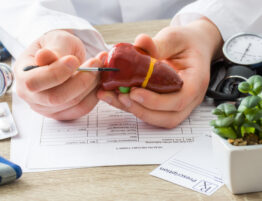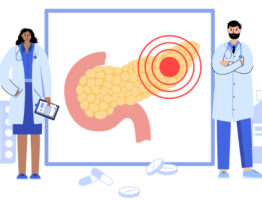
Lung cancer is a cancer that develops from the lungs which are the two spongy organs inside the chest wall. There are many types of lung cancer, but the most common ones are:
- non-small cell lung cancer (NSCLC): represents approximately 80-85% of all lung cancers and the 3 most known subtypes include squamous cell carcinoma, adenocarcinoma and large cell carcinoma. .
- small cell lung cancer (SCLC): represents about 10-15% of all lung cancers. It usually spreads very fast. Around 70% of people who have SCLC were diagnosed at stage 4, when the cancer has already spread.
Statistically, lung cancer is the second most common type of cancer in the world and is the leading cause of cancer deaths worldwide. It has become the leading cause of cancer death among both sexes.
The American Cancer Society’s estimates for lung cancer in the United States for 2020 are:
- About 228,820 new cases of lung cancer (116,300 in men and 112,520 in women)
- About 135,720 deaths from lung cancer (72,500 in men and 63,220 in women)
However, with the current screening programmes and therapeutic procedures, they both are manageable, when identified early.
What are the risk factors for lung cancer?
- Smoking: the most robust risk factor for lung cancer is tobacco smoking.
- Secondhand smoking: secondhand smoking is not harmless. It is almost as dangerous as active smoking. It refers to the smoke you inhale from another smoker.
- Exposure to substances causing cancer: being exposed to harmful substances like radon, asbestos, and other agents such as arsenic, put you at significant risk for developing lung cancer.
- Radiotherapy: being treated with radiotherapy for another cancer in the chest area increases the risk for developing lung cancer.
- Family history of lung cancer: genetics is closely related to many types of cancer. Lung cancer is one of them. Having first degree relatives with the disease especially if the relative was diagnosed at a younger age, increases your chances of developing lung cancer.
- Personal history of lung cancer: being diagnosed with lung cancer previously increases the chances of developing lung cancer again.

What causes lung cancer?
Although tobacco smoking is listed as a risk factor for lung cancer, researches showed it can lead to lung cancer even if it is not a definite cause. And it accounts for 80% of all lung cancers.
It is well-established that gene mutations may alter the DNA of a lung cell, transforming it into a cancerous one. Keep in mind that cancer starts from one single cell then it spreads and grows. Two kinds of genes may interfere with that capacity; these are oncogenes and tumour suppressor genes. Some changes leading to mutations are inherited while others are acquired.
Signs and symptoms of lung cancer:
Usually lung cancer is asymptomatic, and symptoms appear when the cancer has become advanced.
The symptoms and signs may include the following:
- Persistent and progressive coughing
- Coughing with blood
- Chest pain
- Hoarseness of the voice
- Unexplained weight loss
- Loss of appetite
- Fatigue and weakness
- Dyspnea (shortness of breath)
- Wheezing (whistling sound when you breathe)
- Resistant or relapsing lung infections
- Bone pain, nervous system changes, and jaundice if there is a metastasis
- Swelling of the lymph nodes, if there is a metastasis
How to diagnose lung cancer?
Lung cancer can be diagnosed by one or more of the following:
- Imaging tests: a CT scan or an X-Ray can identify if there is a lesion or mass in the lungs
- Sputum cytology: if there is sputum being produced by a persistent cough, it is useful to test this sputum under the microscope to reveal the presence of cancer cells.
- Needle biopsy (tissue sample): having a sample of the mass in the lung to identify the nature of the mass and the type of cancer if confirmed
- Bronchoscopy: using a lighted tube that is passed down your throat and into your lungs looking for abnormal cells
- Mediastinoscopy: inserting special tools through a small cut (incision) at the end of the neck to take samples of lymph nodes if there is suspicion of having cancer.
Treatments of lung cancer:
After being diagnosed with lung cancer, your doctor will establish the stage of your disease. According to your current health status, history, and staging results, your doctor will discuss with you your treatment options.
Treatment options include:
- Surgery: there are different types of surgery depending on the size and location of the cancer. It can be one of the followings:
- Pneumonectomy: removing an entire lung
- Lobectomy: removing an entire lobe of one lung
- Segmental resection: removing a larger portion of a lung, but not an entire lobe
- Wedge resection: removing a small section of a lung that contains the tumour along with a margin of healthy tissue.
- Chemotherapy: using certain drugs to kill cancer which can be taken either intravenously or orally. It can be a single drug or a combination of two drugs given over a period of weeks or months.
- Radiotherapy: using high-powered energy beams from sources such as X-rays and protons to kill cancer cells. It can be used alone or in combination with Chemotherapy.
- Targeted drug therapy: using certain drugs to target specific abnormalities present within cancer cells.
- Immunotherapy: using immune cells or certain drugs which alert the immune cells to kill cancer cells.
- Alternative treatments: the use of other scientific based alternatives to attack cancer cells.
How to prevent lung cancer?
There is no confirmed way of preventing lung cancer but reducing the risk factors can decrease the chances of developing lung cancer.
- Avoid smoking
- Stop smoking
- Avoid secondhand smoking
- Avoid being exposed to carcinogenic gases
- Test your home for redon
- Opt for a healthy diet
- Exercise most days of the week.
Reference:










